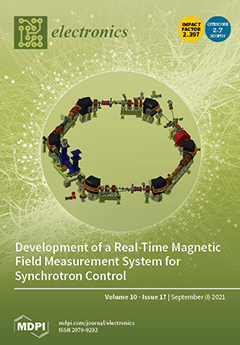The next-generation industrial environment requires power supplies that are compact, efficient, low-cost, and ultra-reliable, even across mains failures, to power mission-critical electrified processes. Hold-up time requirements and the demand for ultra-high power density and minimum production costs, in particular, drive the need for
[...] Read more.
The next-generation industrial environment requires power supplies that are compact, efficient, low-cost, and ultra-reliable, even across mains failures, to power mission-critical electrified processes. Hold-up time requirements and the demand for ultra-high power density and minimum production costs, in particular, drive the need for power converters with (i) a wide input voltage range, to reduce the size of the hold-up capacitor, (ii) soft-switching over the full input voltage and load ranges, to achieve low losses that facilitate a compact realization, and (iii) complete PCB-integration for low-cost manufacturing. In this work, we conceptualize, design, model, fabricate, and characterize a
, 12
-output DC/DC converter for industrial power supplies that is required to operate across a wide 300
–430
input voltage range. This module utilizes an LLC-based control scheme for complete soft-switching and a snake-core transformer to divide the output current with a balanced flux among multiple secondary windings. Detailed loss models are derived for every component in the converter. The converter achieves close to 96% peak efficiency with a power density of 337
(
/
), excellent matching to the derived loss models, and zero-voltage switching even down to zero load. The loss models are used to identify improvements to further boost efficiency, the most important of which is the minimization of delay times in synchronous rectification, and a subsequent improved
hardware module eliminates nearly 25% of converter losses for a peak efficiency of nearly 97% with a power density of 308
(
). Two
modules are then paralleled to achieve 3
output power at 12
and 345
(
) with ideal current sharing between the secondary outputs and no drop in efficiency from a single module, an important characteristic enabled by the novel snake-core transformer.
Full article





